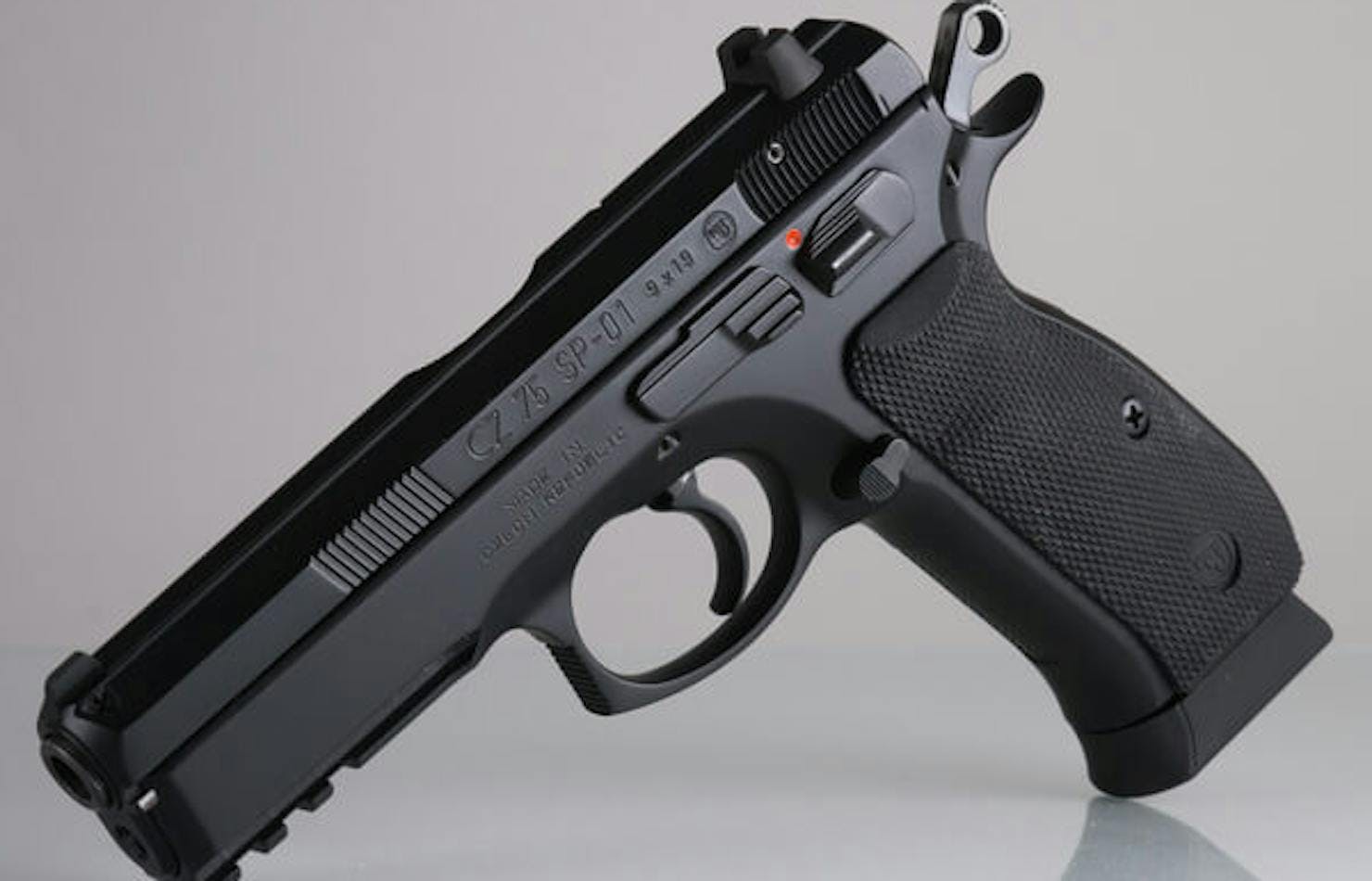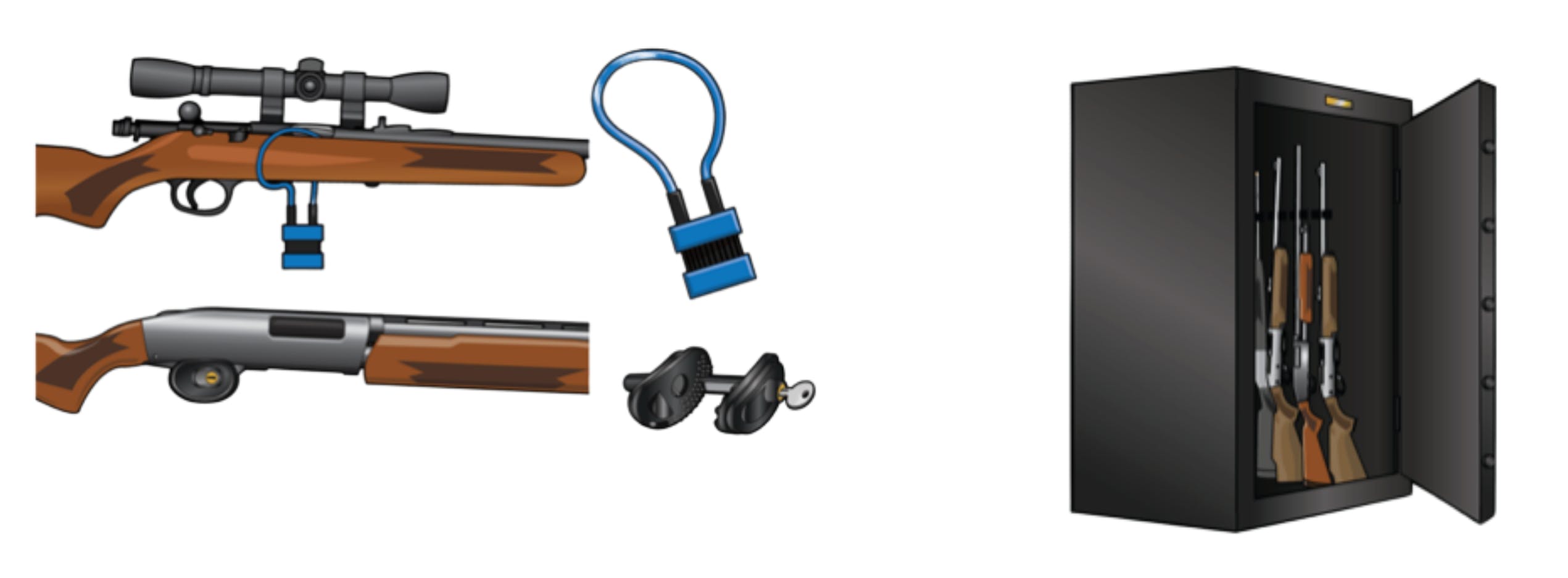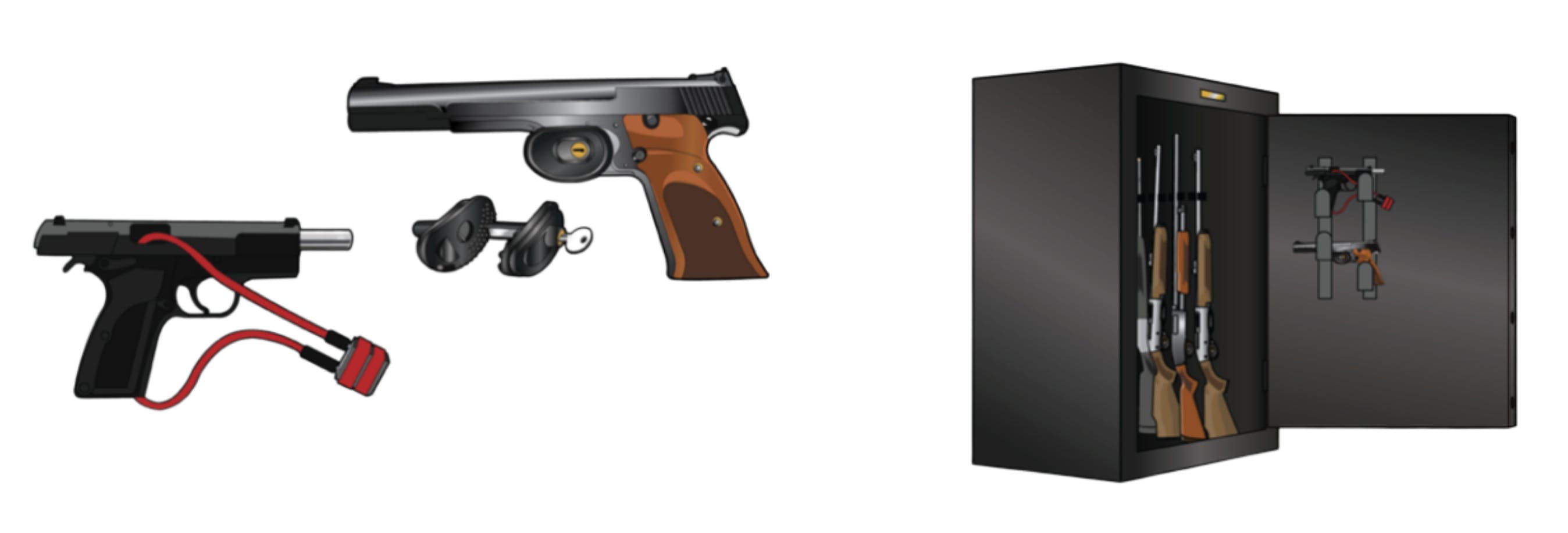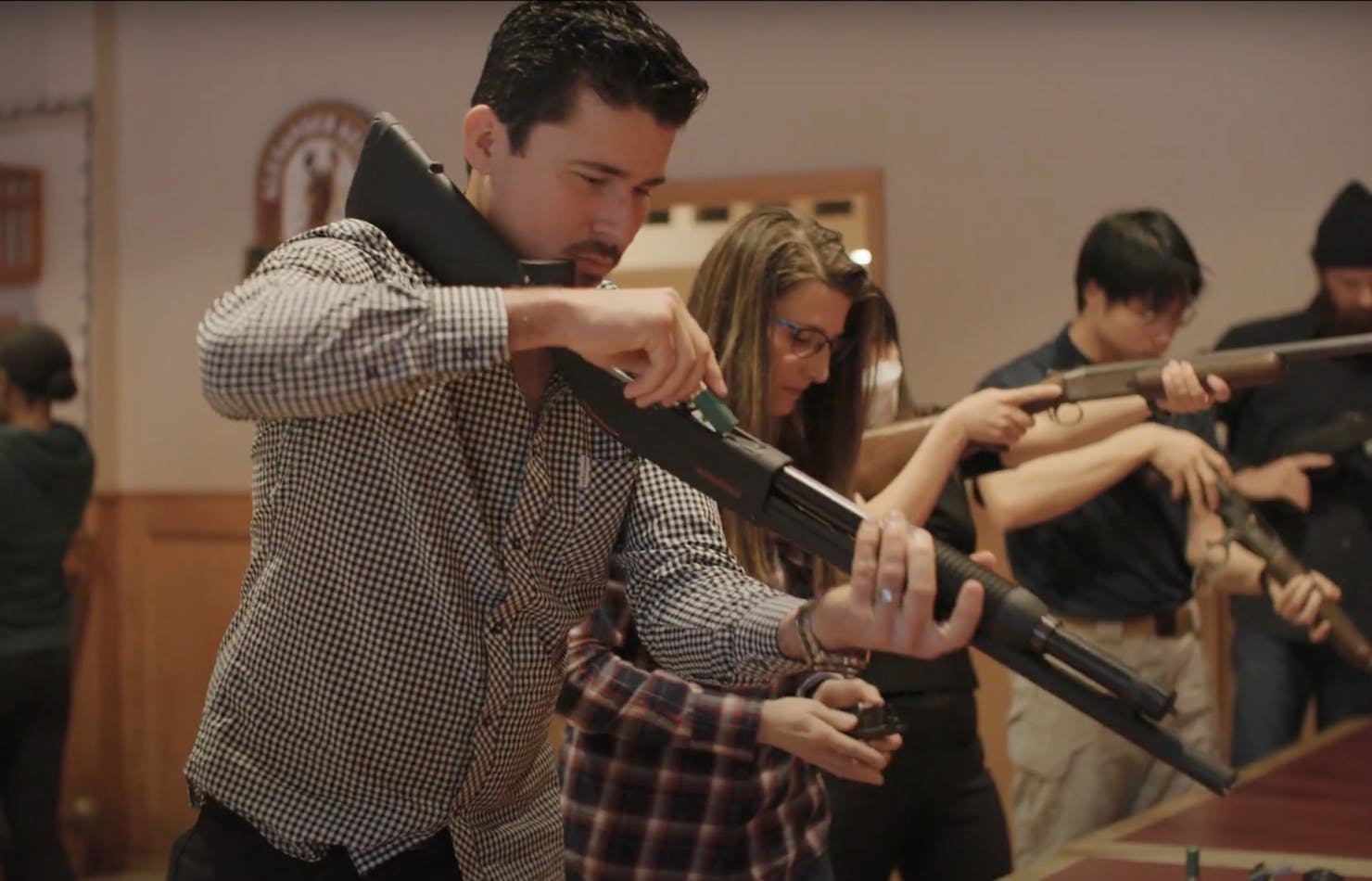
Safely Store, Transport, and Display your Firearms
You’ve passed your CFSC/CRFSC test, you’ve purchased your desired firearms, now it’s time to store, transport, and display them! In this blog post, we will be reviewing and re-articulating what the RCMP and Canadian Firearms Program, CFP, have put into place in regards to storing, transporting, and displaying your restricted, prohibited, and non-restricted firearms.
While this is not a legal document, we have reviewed the laws and created this simple online reference! Please note that these rules apply to individuals and that there are different rules for businesses.

Storing Firearms Safely
Unload and lock your firearms! Store the ammunition separately or lock it up. Ammunition can be stored in the same locked container as the firearms.

Non-Restricted Firearms
- Attach a secure locking device, such as a trigger or cable lock (or remove the bolt or bolt carrier), so the firearms cannot be fired.
- Additionally, you can lock the firearm in a cabinet, container or room that is difficult to break into or that you only have the code or key for.

Storage of Non-Restricted Firearms
- 5 (1) An individual may store a non-restricted firearm only if
undefinedundefinedundefined - (2) Paragraph (1)(b) does not apply to any individual who stores a non-restricted firearm temporarily if the individual reasonably requires it for the control of predators or other animals in a place where it may be discharged in accordance with all applicable Acts of Parliament and of the legislature of a province, regulations made under such Acts, and municipal by-laws.
- (3) Paragraphs (1)(b) and (c) do not apply to an individual who stores a non-restricted firearm in a location that is in a remote wilderness area that is not subject to any visible or otherwise reasonably ascertainable use incompatible with hunting.
Restricted and Prohibited Firearms
- Attach a secure locking device so the firearms cannot be fired and lock them in a cabinet, container, or room that is difficult to break into.
- You can also lock the firearms in a vault, safe, or room that was built or modified specifically to store firearms safely and a secure locking device is not required by law.
- For automatic firearms, also remove the bolts or bolt carriers (if removable) and lock them in a separate room that is difficult to break into.
Storage of Restricted Firearms
6 An individual may store a restricted firearm only if
- (a) it is unloaded;
- (b) it is
undefinedundefined - (c) it is not readily accessible to ammunition, unless the ammunition is stored, together with or separately from the firearm, in
undefinedundefined
Storage of Prohibited Firearms
- 7 An individual may store a prohibited firearm only if
undefinedundefinedundefined
Transporting Firearms Safely
Non-Restricted Firearms
- Non-restricted firearms must be unloaded during transportation
Restricted and Prohibited Firearms
- Unload the firearms
- Attach secure locking devices to the firearms
- Lock the firearms in a sturdy, non-transparent container
- Remove the bolts or bolt carriers from any automatic firearms, if removable.
- Obtain an Authorization to Transport (ATT)

Leaving any class of firearms in an unattended vehicle:
- Lock non-restricted firearms and locked containers carrying restricted or prohibited firearms in
the trunk or similar lockable compartment. - If the vehicle does not have a truck or lockable component, put the firearms and firearm containers out of sight inside the vehicle and lock the vehicle.
- If you are in the remote wilderness area and cannot lock your non-restricted firearms inside your vehicle, unload and put them out of sight. Attach a secure locking device to the firearms unless they are needed for predator control.
Transportation of Non-Restricted Firearms
- 10 (1) An individual may transport a non-restricted firearm only if
undefinedundefined - (2) Subject to subsection (3), an individual may transport a non-restricted firearm in an unattended vehicle only if
undefinedundefined - (3) If, in a remote wilderness area that is not subject to any visible or otherwise reasonably ascertainable use incompatible with hunting, an individual is transporting a non-restricted firearm in an unattended vehicle that is not equipped with a trunk or similar compartment that can be securely locked, and the vehicle or the part of it that contains the non-restricted firearm cannot be securely locked, the individual shall ensure that the non-restricted firearm
undefinedundefined
Transportation of Restricted Firearms
11 An individual may transport a restricted firearm only if
- (a) it is unloaded;
- (b) it is rendered inoperable by means of a secure locking device;
- (c) it is in a locked container that is made of an opaque material and is of such strength, construction and nature that it cannot readily be broken open or into or accidentally opened during transportation; and
- (d) if it is in a container described in paragraph (c) that is in an unattended vehicle,
undefinedundefined
Transportation of Prohibited Firearms
12 An individual may transport a prohibited firearm only if
- (a) it is unloaded;
- (b) it is rendered inoperable by means of a secure locking device;
- (c) if it is an automatic firearm that has a bolt or bolt-carrier that is removable with reasonable facility, the bolt or bolt-carrier is removed;
- (d) it is in a locked container that is made of an opaque material and is of such strength, construction and nature that it cannot readily be broken open or into or accidentally opened during transportation; and
- (e) when it is in a container described in paragraph (d) that is in an unattended vehicle,
undefinedundefined
Displaying Firearms Safely
Unload and lock your firearms! Here are the rules for displaying firearms in your home: Ammunition cannot be displayed with, or accessible to, the firearms.
Non-Restricted Firearms
- Attach secure locking devices to the firearms
- Lock the firearms in a cabinet, container, or room that is difficult to break into.
Restricted and Prohibited Firearms
- Attach secure locking devices to the firearms
- Securely attach them to something that cannot be moved
- For automatic firearms, also remove the bolts or bolts carriers, if removable, and lock them in a separate room that is difficult to break into.
Display of Non-Restricted Firearms
8 An individual may display a non-restricted firearm only if it
- (a) is unloaded;
- (b) is rendered inoperable by means of a secure locking device or is in a container, receptacle or room that is kept securely locked and that is constructed so that it cannot readily be broken open or into; and
- (c) is not displayed with and is not readily accessible to ammunition that can be discharged from it.
Display of Restricted Firearms and Prohibited Firearms
- 9 (1) An individual may display a restricted firearm or a prohibited firearm in a dwelling-house only if
undefinedundefinedundefinedundefinedundefined - (2) An individual may display a restricted firearm in a place other than a dwelling-house only if it
undefinedundefinedundefinedundefined - (3) An individual may display a prohibited firearm in a place other than a dwelling-house only if
undefinedundefinedundefinedundefinedundefined - (4) Paragraphs (2)(c) and (3)(c) do not apply if the firearm is detached from the structure so that the firearm may be handled by a person under the direct and immediate supervision of the individual displaying it.
Some rules may be different for firearms displayed away from home- for example, at a gun show.
For more information, contact the RCMP Canadian Firearms Program (CFP).
Replica Firearms
You should store and display replica firearms safely to prevent loss and theft. During transport, replica firearms must be locked in the trunk or a similar compartment. If not available in the vehicle, they must be out of sight inside the locked vehicle.
Antique Firearms
Antique firearms must be unloaded for storage, display, and transportation. During transportation, antique handguns must be locked in a heavy duty container, that you cannot see through and that can easily be broken open during transport.
If leaving the Antique firearm in an unattended vehicle, lock it in the trunk or a similar compartment. If not available in the vehicle, they must be out of sight inside the locked vehicle.
Note: Not all old firearms are classified as antiques. The Firearms Act indicates that antique firearms include:
- Firearms manufactured before 1898 that were not designed or re-designed to discharge rim-fire or centre-fire ammunition.
- Firearms prescribed as antique firearms in the Criminal Code regulations.
Information
For more information, or to report a public safety concern, contact the CFP by one of the following methods:
1) 1-800-731-4000
Things to remember:
- Don’t forget to renew your firearms licence before it expires.
- Contact the Canadian Firearms Program if your address changes.
This blog post is intended to provide general information about storing, transporting, and displaying of your restricted, prohibited, and non-restricted firearms. For legal references, please refer to the Storage, Display, Transportation and Handling of Firearms by Individuals Regulations. Provincial, territorial, and municipal laws, regulations and policies may apply.
For more information on this topic, head to the Canadian Firearms Program’s website and for an online look at this brochure, click here.


